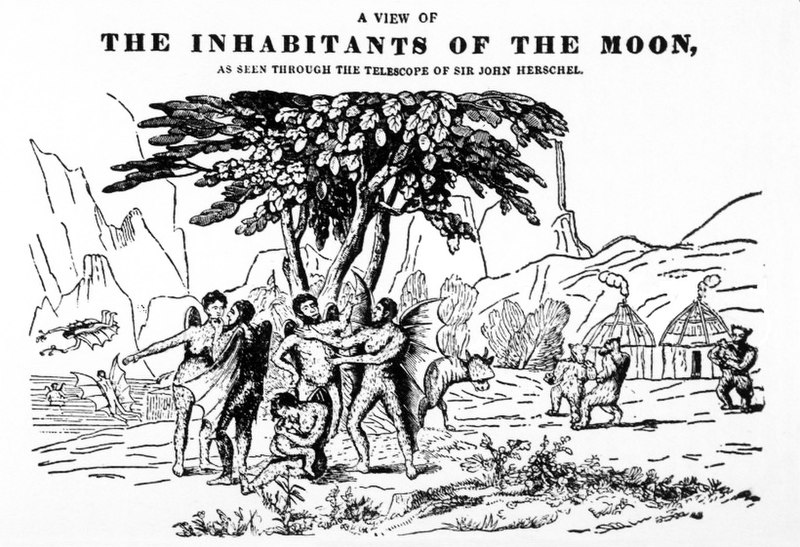Joseph Smith and Moon Quakers

Did Joseph Smith teach that men who look like Quakers live on the moon?
Possibly. The only source for this comes from Oliver Huntington,[BIO] who said in 1881 that he heard it from Philo Dibble,[BIO] who apparently recalled this from 40 years earlier.[1]
According to Huntington, Joseph taught, "Inhabitants of the Moon are more of a uniform size than the inhabitants of the Earth, being about 6 feet in height. They dress very much like the Quaker style & are quite general in style or the one fashion of dress. They live to be very old; coming generally, near a thousand years."[2]
There is no account of this from Philo Dibble and no other corroborating sources for Huntington's claim.
Joseph Smith and Quakers on the Moon
December 7, 1836
June 27, 1844
Joseph Smith is martyred.[4]
35 years pass
ca. January–February 1881
Oliver Huntington records in his journal that he heard from Philo Dibble that Joseph Smith taught the moon was inhabited.[5]
February 1892
April 1894
Oliver Huntington again publishes a recollection of his blessing about preaching to men on the moon in the Young Woman's Journal, but adds that he is "confident" that it is referring to a time after mortality.[7]

Did other Latter-day Saints believe people lived on the moon or the sun?
Yes. Early Latter-day Saints such as Hyrum Smith[BIO] and Brigham Young[BIO] apparently believed this.[8] Joseph Smith Sr.[BIO] also gave a patriarchal blessing that spoke of Lorenzo Snow having "power to go to the moon."[9]
Although some nineteenth-century Latter-day Saints argued that the moon was probably not inhabited.[10]
Was it common to believe the moon was inhabited in the nineteenth century?
Yes, scientists such as William Herschel[BIO] and theologians such as Adam Clarke[BIO] believed the moon was likely inhabited,[11] though it was a topic of debate.[12]
Why did some Latter-day Saints think the moon was inhabited?
It was a commonly held belief at the time,[13] and Joseph Smith's revelations referred to God creating many worlds that were inhabited.[14]
Is the moon inhabited?
No. The moon has a weak atmosphere with only trace levels of oxygen, no liquid water, and cannot natively support human life.[15]
- Jack L.
“Joseph Smith was pulling Oliver Huntington's leg: "They dress very much like the Quaker style & are quite general in style or the one fashion of dress." Typical Yankee fun. Hilarious!” - David
“It's important to remember that God does have other inhabited worlds, but our moon cannot sustain life. The probability of their being Moon Quakers, no matter how cool that would be, is very low.” - Peterson
“What I think is happening here is a misunderstanding or misconstrued recounting of the concept of the terrestrial kingdom in heaven; which is comparable to the glory of the moon. Perhaps he'd teach people in the spirit world the gospel.” - gerry
“I personally believe that teaching to people on the moon may refer to when we die we can preach the gospel to people on the terrestrial kingdom, often represented by the moon. So being able to ¨preach to the people on the moon¨ is more of a metaphor than literal.” - Joe
“Haha! Love this article, it made me smile. Especially including the final fact that “the moon is not inhabited.” So obvious now, but still so necessary in this day and age!”



 about this topic
about this topic